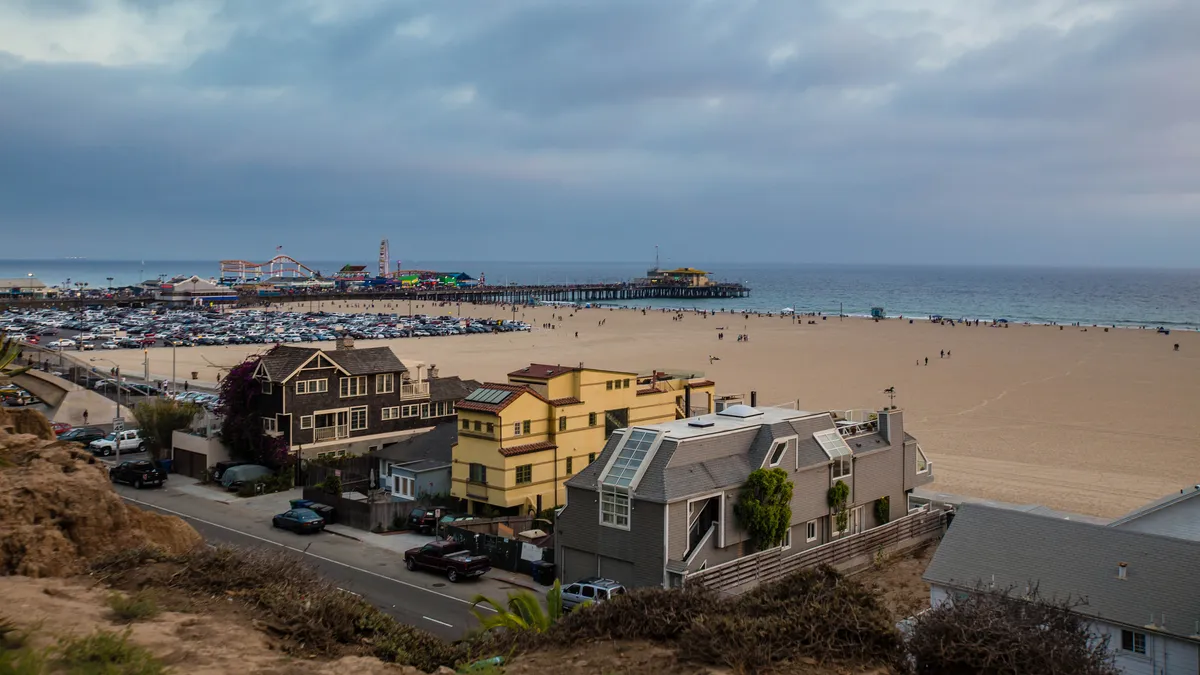Dive Brief:
-
The Santa Monica, CA, City Council last week approved an ordinance requiring new single-family homes built in the city to be net-zero energy based on the standards set forth in the 2016 California Green Building Standards Code. The ordinance also requires multifamily buildings to use 10% less energy than the 2016 California Energy Code requires.
-
Net-zero energy homes generate as much energy as they consume from the grid in a year, using renewable sources such as solar and wind power.
-
The California Energy Commission now must approve the ordinance, which would be implemented in 2017. Previously, the California Public Utilities Commission put forth a roadmap for all residential buildings in the state to be net-zero energy by 2020 and all commercial buildings to be so by 2030. Santa Monica is the first California city to adopt such an ordinance.
Dive Insight:
Located in water-scarce Southern California, Santa Monica is a champion of green building design and technology. In October, it announced plans for an ultra-green city services building, which has applied for certification through the stringent Living Building Challenge and will include onsite water collection, composting toilets and a net-zero energy status. In 2013, the city opened Tongva Park, which features a design inspired by the natural landscape and outfitted with native vegetation to prevent runoff.
A September 2016 report from real estate listing website Redfin said downtown Santa Monica was among the top 10 U.S. neighborhoods in 2015 for homes with green features, ranking No. 3 behind Villanova (Philadelphia) and the Villages of Irvine (Irvine, CA).
Santa Monica’s move is part of a continued push among municipalities and states toward carbon neutrality. But not everyone is keeping pace. In an update on its 2030 Commitment Initiative to reduce energy-use intensity, the American Institute of Architects noted that only 4% of projects achieved the 70% energy-savings goal by 2015, which was set to help the built environment attain carbon neutrality by 2030. According to the AIA, the average energy savings was instead 38%.
Meanwhile, the World Green Building Council launched its Advancing Net Zero initiative in June that aims for all new buildings and big renovation projects to be net-zero by 2030, and all buildings to be net-zero by 2050.














